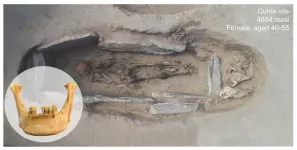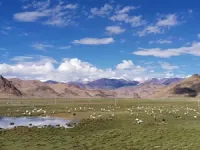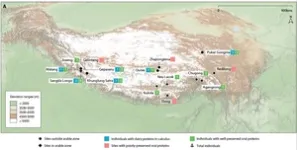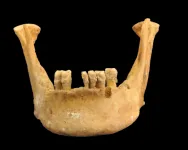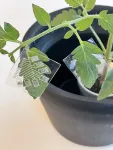(Press-News.org) New research into ancient populations that resided on the Tibetan Plateau has found that dairy pastoralism was being practiced far earlier than previously thought and may have been key to long-term settlement of the region’s extreme environment.
Professor Michael Petraglia, Director of Griffith’s Australian Research Centre for Human Evolution, was part of the international research team that set out to understand how prehistoric populations adapted to the vast, agriculturally poor highlands of the Tibetan Plateau.
The research, published in Science Advances, revealed that dairy pastoralism began on the highland plateau by about 3500 years ago.
The research team was led by PhD candidate Li Tang with Professor Nicole Boivin of the Max Planck Institute for the Science of Human History, Professor Shargan Wangdue from the Tibetan Cultural Relics Conservation Institute and Professor Hongliang Lu from the Center for Archaeological Science at Sichuan University.
They found that dairying was a critical cultural adaptation that supported expansion of the early pastoralists into the region’s vast, non-arable highlands, opening the Tibetan Plateau up to widespread, long-term human occupation.
“The extreme environments of the Tibetan Plateau – one of the world’s largest and highest and commonly referred to as the ‘third pole’ – offer significant challenges to human survival and demanded novel adaptations,” Professor Petraglia said.
The role of biological and agricultural adaptations that enabled early human colonisation of the plateau has been widely discussed.
“These included genetic adaptations that allowed Tibetans to use smaller amounts of oxygen more efficiently,” Li Tang said.
“But the contribution of pastoralism to the settlement of Tibet is less well understood, especially the dairy pastoralism that has historically been central to Tibetan diets.”
The researchers used palaeoproteomic techniques to analyse ancient milk proteins preserved in the dental calculus of 40 human individuals from 15 ecologically diverse sites in Tibet and western Qinghai.
Dental calculus provides a direct source of ancient dietary information on individual humans because food proteins and other substances become trapped in the calcified matrix during its formation. This matrix can help to stave off processes of decay, supporting long-term preservation of ancient biomolecules from certain foods like milk.
Investigating the amino acid sequences of some milk proteins revealed that these ancient humans sourced their dairy resources from sheep, goat, and possibly cattle and yak.
Patterns of milk protein recovery highlighted to the researchers the importance of dairy for individuals who lived in agriculturally poor regions higher than 3700 metres above sea level.
‘Previous research has suggested that crop cultivation based on frost-tolerant barley was one of the critical adaptative strategies that enabled more sustained habitation of the Tibetan Plateau, facilitating its permanent occupation by around 3600 years ago,” Professor Boivin said.
“But this finding reflects data collected only from arable regions of the plateau situated below 3500 meters above sea level.
“Our findings indicate that dairying was introduced onto the interior Tibetan Plateau by at least 3500 years ago, more than 2000 years earlier than recorded in historical sources.”
This timing coincides with the earliest archaeologically identified domesticated ruminant bones on the interior plateau, indicating that dairying was probably adopted as soon as pastoralism spread into this region.
“Understanding how ancient populations obtained sufficient food to survive in these agriculturally marginal highlands is key to understanding the long-term economic and demographic, as well as land-use development of the Tibetan Plateau,” Li Tang said.
END
Got milk? The ancient Tibetans did, according to study
Dairy pastoralism began on the plateau by ~3500 years ago and supported population expansion into its vast, non-farmable highlands.
2023-04-12
ELSE PRESS RELEASES FROM THIS DATE:
From tragedy, a new potential cancer treatment
2023-04-12
Diffuse intrinsic pontine glioma (DIPG) is a lethal pediatric brain cancer that often kills within a year of diagnosis. Surgery is almost impossible because of the tumors’ location. Chemotherapy has debilitating side effects. New treatment options are desperately needed.
Cold Spring Harbor Laboratory Professor Adrian Krainer is best known for his groundbreaking research on antisense oligonucleotides (ASOs)—molecules that can control protein levels in cells. His efforts led to Spinraza®, ...
Dairy foods helped ancient Tibetans thrive in one of Earth’s most inhospitable environments
2023-04-12
The Tibetan Plateau, known as the “third pole”, or “roof of the world”, is one of the most inhospitable environments on Earth. While positive natural selection at several genomic loci enabled early Tibetans to better adapt to high elevations, obtaining sufficient food from the resource-poor highlands would have remained a challenge.
Now, a new study in the journal Science Advances reveals that dairy was a key component of early human diets on the Tibetan Plateau. The study reports ancient ...
Multifunctional patch offers early detection of plant diseases, other crop threats
2023-04-12
Researchers from North Carolina State University have developed an electronic patch that can be applied to the leaves of plants to monitor crops for different pathogens – such as viral and fungal infections – and stresses such as drought or salinity. In testing, the researchers found the patch was able to detect a viral infection in tomatoes more than a week before growers would be able to detect any visible symptoms of disease.
“This is important because the earlier growers can identify plant diseases or fungal infections, the ...
Predictive power of climate models may be masked by volcanoes
2023-04-12
Simulated volcanic eruptions may be blowing up our ability to predict near-term climate, according to a new study published in Science Advances.
The research, led by the National Center for Atmospheric Research (NCAR), finds that the way volcanic eruptions are represented in climate models may be masking the models’ ability to accurately predict variations in sea surface temperatures in the tropical Pacific that unfold over multiple years to a decade.
These decadal variations in sea surface ...
Industry veteran Pablo Velez, RN, Ph.D., named CEO of El Centro Regional Medical Center
2023-04-12
In coordination with the El Centro Regional Medical Center (ECRMC) Board of Trustees, UC San Diego Health today announced that Pablo Velez, RN, PhD, has been appointed by UC San Diego Health as ECRMC’s chief executive officer effective April 17. Reporting to UC San Diego Health CEO Patty Maysent, Velez will oversee day-to-day operational, clinical and financial management of ECRMC, leading UC San Diego Health’s overall efforts to support the strategic and operational plan that was announced ...
Genes are read faster and more sloppily in old age
2023-04-12
In a large joint project, a total of six research groups from the University of Cologne Cluster of Excellence on Cellular Stress Responses in Age-Associated Diseases (CECAD), the Max Planck Institute for Biology of Aging (MPI) in Cologne and the University of Göttingen have demonstrated the following findings which apply across the animal kingdom: with increasing age, the transcriptional elongation speed of genes increases, whereby the quality of the gene products suffers. With dietary restrictions, ...
Rates of food insecurity in US may be significantly higher than surveys suggest
2023-04-12
Key Points
Many federal and local government agencies send out a United States Department of Agriculture survey once a year or less to determine whether households experienced food insecurity in the last 12 months.
In a new study, USC researchers found that households are more likely to accurately report food insecurity when surveyed more often and asked about their recent experiences. They also found that the USDA measure may be underreporting the true rate by as much as one-third.
Without ...
Humans need Earth-like ecosystem for deep-space living
2023-04-12
ITHACA, N.Y. – Can humans endure long-term living in deep space? The answer is a lukewarm maybe, according to a new theory describing the complexity of maintaining gravity and oxygen, obtaining water, developing agriculture and handling waste far from Earth.
Dubbed the Pancosmorio theory – a word coined to mean “all world limit” – it was described in a paper published in Frontiers in Astronomy and Space Sciences.
“For humans to sustain themselves and all of their technology, infrastructure and society in space, they need a ...
Nobel Prize-winning immuno-oncology expert receives Block Memorial Lectureship
2023-04-12
COLUMBUS, Ohio – James P. Allison, PhD, is the recipient of the 25th Herbert and Maxine Block Memorial Lectureship Award for Distinguished Achievement in Cancer. A 2018 Nobel Prize co-recipient in physiology/medicine, Allison serves as the chair of immunology and executive director of the Immunotherapy Platform at The University of Texas MD Anderson Cancer Center.
He is a renowned immunologist whose research led to the discovery of the immune system’s T-cell receptor structure and later a molecule ...
UIUC researchers image magnetic behavior at the smallest scales to date
2023-04-12
Permanent magnets, the kind found on refrigerators everywhere, exist because their constituent atoms behave as miniature magnets. They align and combine to form the larger magnet in a phenomenon called ferromagnetism. There are some materials where the atomic magnets instead form an alternating pattern, so the material has no net magnetization. Such antiferromagnets have attracted attention for their potential to create faster and more compact magnetic memory devices for computing.
Realizing the full potential of antiferromagnetic devices will require sensing their atom-to-atom magnetic patterns, ...
LAST 30 PRESS RELEASES:
University of Phoenix College of Doctoral Studies releases white paper on AI-driven skilling to reduce burnout and restore worker autonomy
AIs fail at the game of visual “telephone”
The levers for a sustainable food system
Potential changes in US homelessness by ending federal support for housing first programs
Vulnerability of large language models to prompt injection when providing medical advice
Researchers develop new system for high-energy-density, long-life, multi-electron transfer bromine-based flow batteries
Ending federal support for housing first programs could increase U.S. homelessness by 5% in one year, new JAMA study finds
New research uncovers molecular ‘safety switch’ shielding cancers from immune attack
Bacteria resisting viral infection can still sink carbon to ocean floor
Younger biological age may increase depression risk in older women during COVID-19
Bharat Innovates 2026 National Basecamp Showcases India’s Most Promising Deep-Tech Ventures
Here’s what determines whether your income level rises or falls
SCIE indexation achievement: Celebrate with Space: Science & Technology
Children’s Hospital Colorado performs region’s first pediatric heart and liver dual organ transplant
Australian team discover why quantum computers have memory problems over time
What determines the fate of a T cell?
Candida auris: genetic process revealed which could be treatment target for deadly fungal disease
Groundbreaking discovery turns household plastic recycling into anti-cancer medication
Blocking a key inflammatory pathway improves liver structure and vascular function in cirrhosis, study finds
Continuous spread: Raccoon roundworm detected in nine European countries
HKUST Engineering researchers developed a novel photodetector to enhance the performance of on-chip light monitoring
Strategic river sensors could have forewarned of Texas Camp flood disaster
Drone sampling of whale breath reveals first evidence of potentially deadly virus in Arctic
Roman soldiers defending Hadrian’s Wall infected by parasites, study finds
Pinochet’s prisoners were tormented with music but still found solace in it, a new book reveals
Fertility remains high in rural Tanzania despite access to family planning
AI-assisted device can improve autism care access
Kinetic careers
Uncovering how parasitic plants avoid attacking themselves to improve crop resistance
Nanoparticle vaccine strategy could protect against Ebola and other deadly filoviruses
[Press-News.org] Got milk? The ancient Tibetans did, according to studyDairy pastoralism began on the plateau by ~3500 years ago and supported population expansion into its vast, non-farmable highlands.
